Simulation Standard
Silvaco面向半导体工艺和器件仿真工程师推出的技术刊物
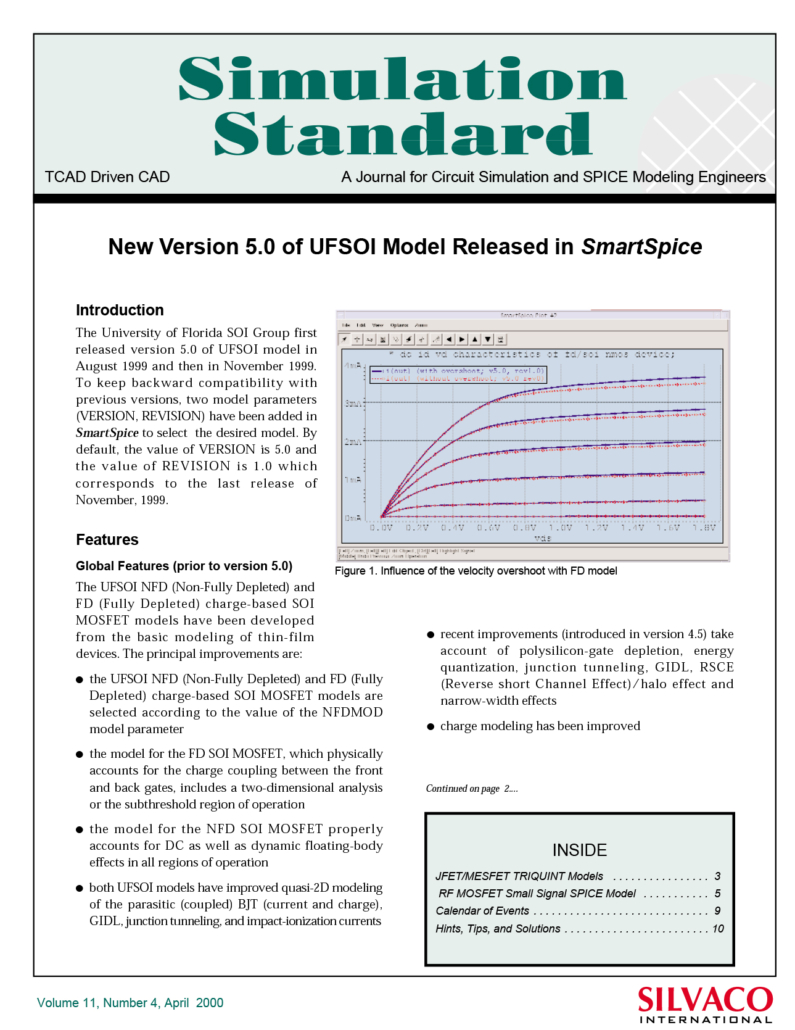
New Version 5.0 of UFSOI Model Released in SmartSpice
The University of Florida SOI Group first released version 5.0 of UFSOI model in August 1999 and then in November 1999. To keep backward compatibility with previous versions, two model parameters (VERSION, REVISION) have been added in SmartSpice to select the desired model. By default, the value of VERSION is 5.0 and the value of REVISION is 1.0 which corresponds to the last release of November, 1999.
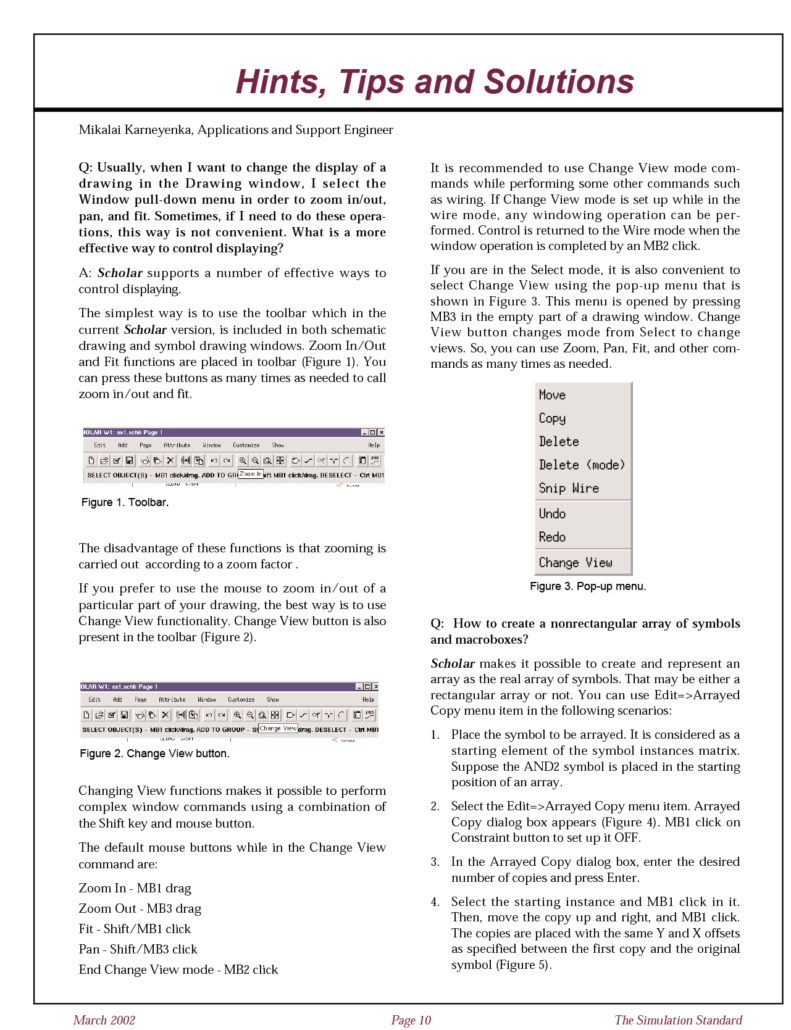
Hints, Tips, and Solutions March 2000
Q: Usually, when I want to change the display of a drawing in the Drawing window, I select the Window pull-down menu in order to zoom in/out, pan, and fit. Sometimes, if I need to do these operations, this way is not convenient. What is a more effective way to control displaying?
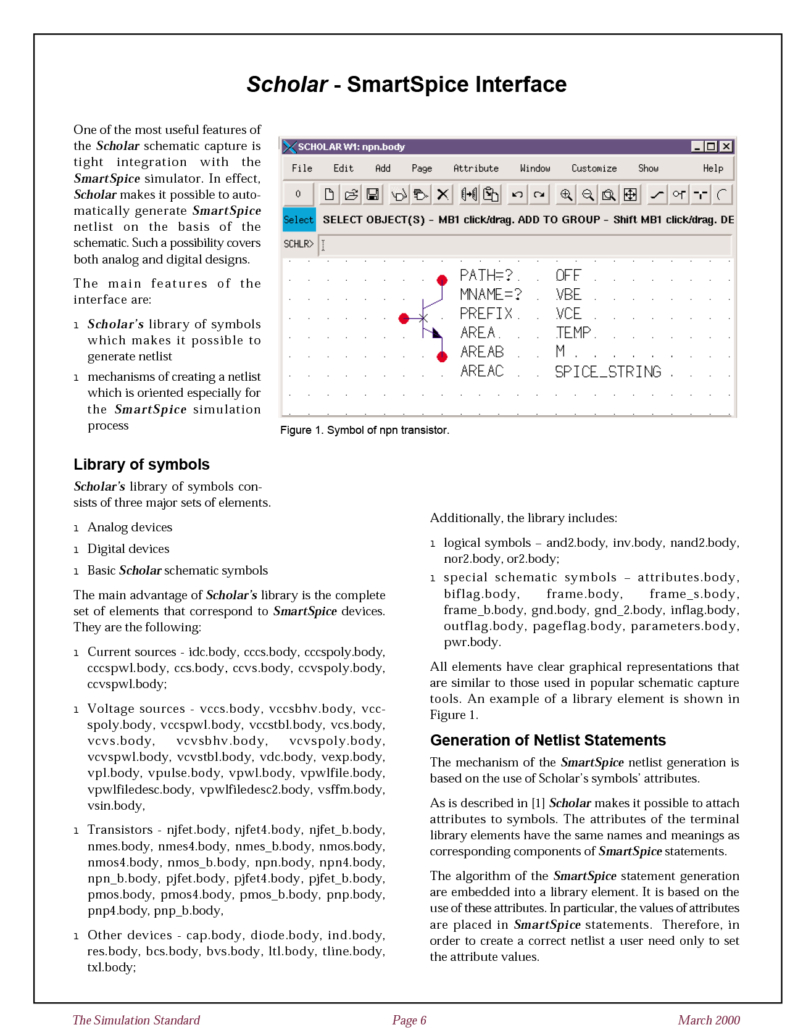
Scholar – SmartSpice Interface
One of the most useful features of the Scholar schematic capture is tight integration with the SmartSpice simulator. In effect, Scholar makes it possible to automatically generate SmartSpice netlist on the basis of the schematic. Such a possibility covers both analog and digital designs.
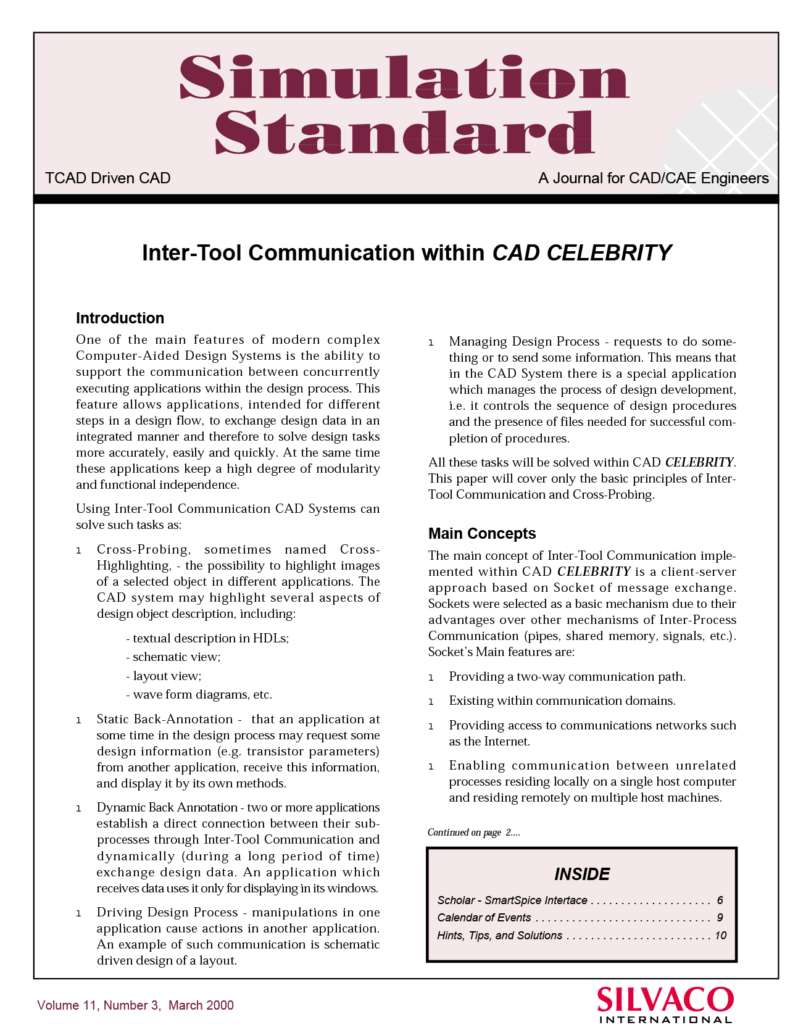
Inter-Tool Communication Within CAD CELEBRITY
One of the main features of modern complex Computer-Aided Design Systems is the ability to support the communication between concurrently executing applications within the design process. This feature allows applications, intended for different steps in a design flow, to exchange design data in an integrated manner and therefore to solve design tasks more accurately, easily and quickly.
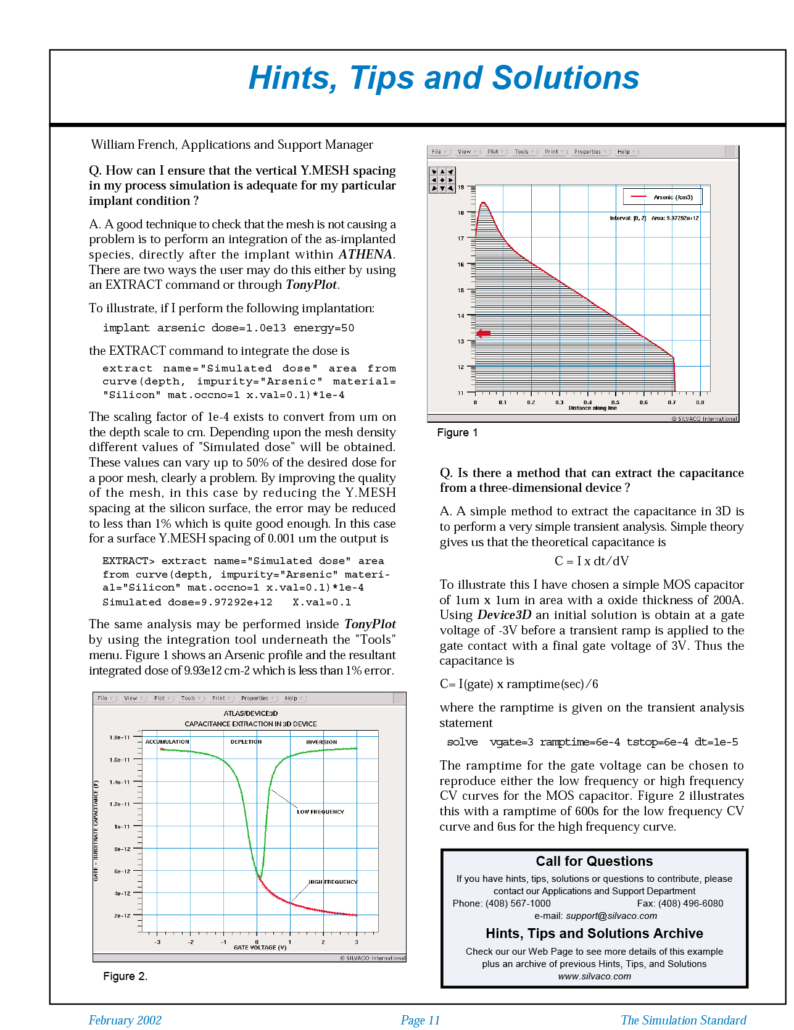
Hints, Tips, and Solutions February 2000
Q. How can I ensure that the vertical Y.MESH spacing in my process simulation is adequate for my particular implant condition? A. A good technique to check that the mesh is not causing a problem is to perform an integration of the as-implanted species, directly after the implant within ATHENA.
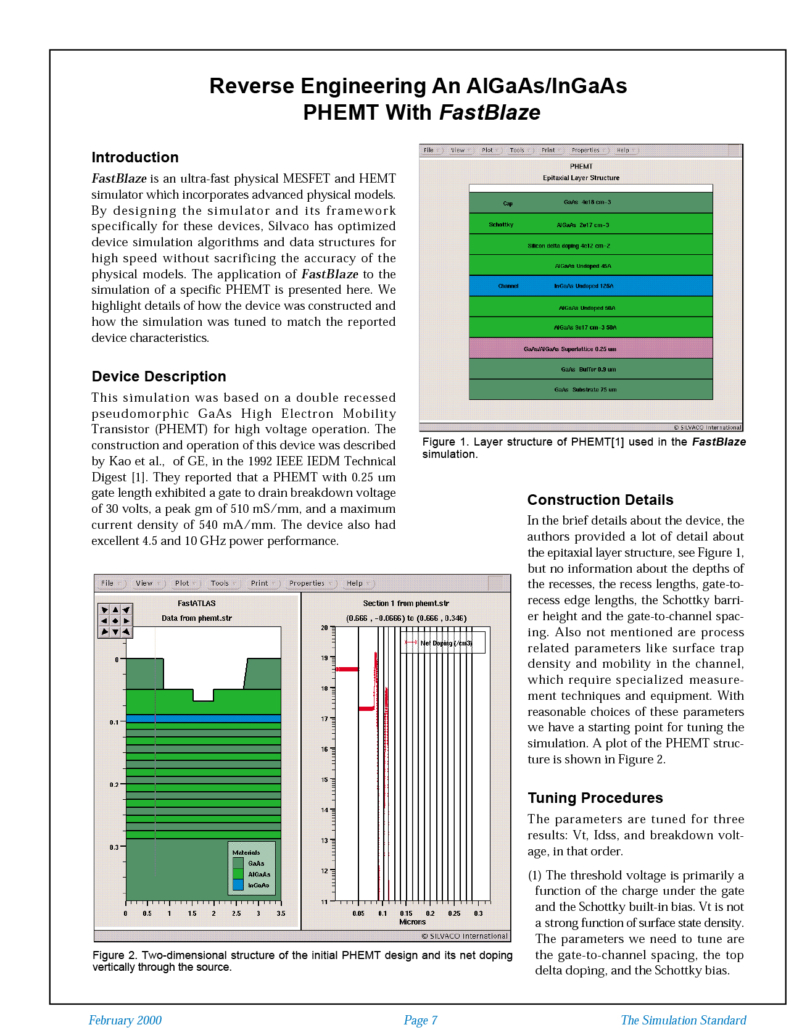
Reverse Engineering An AlGaAs/InGaAs PHEMT With FastBlaze
FastBlaze is an ultra-fast physical MESFET and HEMT simulator which incorporates advanced physical models. By designing the simulator and its framework specifically for these devices, Silvaco has optimized device simulation algorithms and data structures for high speed without sacrificing the accuracy of the physical models.

